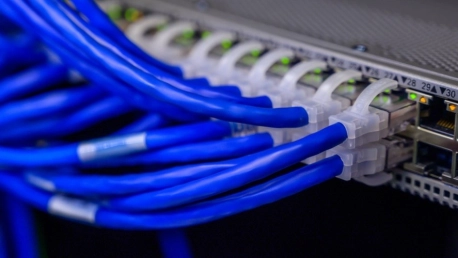Passive Optical Network (PON) technology has been growing in popularity in recent years as a means of providing high-speed Internet access to homes and businesses. During the COVID-19 pandemic, the global market experienced significant growth, as consumers rapidly shifted from copper-based data services to modern optical technology.
In this article, we will explore the key drivers behind the adoption of PON technology and the benefits it offers to both service providers and end-users.
From Fiber to Home: Understanding Passive Optical Networks
A Passive Optical Network (PON) is a telecommunications architecture that enables the distribution of optical fiber to multiple end-users. It is a point-to-multipoint network configuration, where a single optical fiber is split to serve multiple subscribers or users.
In a PON network, there are three main components: the Optical Line Terminal (OLT), Optical Network Units (ONUs), and optical splitters. The OLT is typically located at the service provider’s central office or data center and acts as the main control unit. The ONUs are installed at the subscriber’s premises and serve as the interface between the optical fiber and the customer’s devices. The optical splitters are passive devices used to divide the optical signal from the OLT into multiple paths to reach different ONUs. The use of passive splitters eliminates the need for active electronics in the distribution network, reducing the overall cost and complexity of the network.
PON networks are commonly used for delivering high-speed broadband services, such as Internet access, voice, and video services. They offer advantages such as high bandwidth capacity, long-distance reach, and cost-effectiveness. PON technology is widely deployed in various applications, including Fiber to the Home (FFTH), Fiber to the Building (FTTB), and Fiber to the Premises (FTTP), enabling efficient and scalable broadband connectivity for residential and business users.
Key Drivers Behind the Adoption of PON
The global PON equipment market is expected to reach US$ 42.6 Bn by 2031, up from US$ 12.7 Bn in 2022, according to a Transparency Market Research report.
The adoption of PON technology has been driven by several factors. These include the rising demand for high-speed Internet access, the need for more reliable and efficient networks, and the desire to reduce costs associated with building and maintaining traditional copper-based networks. The growing adoption of next-gen technologies in the communication industry, rapid increase in the number of IoT devices, and a raft of new smart city development projects are also fueling the growth of this market.
Increasing Demand for High-Speed Internet
The growing demand for high-speed Internet access has been a major driver behind the adoption of PON technology. With the increasing use of Internet-based applications, such as video conferencing, online gaming, and streaming services, consumers are demanding faster and more reliable Internet connections. PON networks provide the bandwidth needed to support these applications, delivering high-speed Internet access to homes and businesses.
More Reliable and Efficient Networks
PON networks are more reliable and efficient than traditional copper-based networks. Optical fibers are immune to electromagnetic interference, which can cause interference and signal degradation in copper-based networks. Additionally, PON networks are more efficient, as they can support multiple users with a single optical fiber, reducing the costs associated with building and maintaining traditional networks.
Reducing Costs
Building and maintaining traditional copper-based networks can be expensive, as it requires the installation of many individual lines to each home or business. PON networks, on the other hand, are much more cost-effective, as a single optical fiber can support multiple users. This reduces the costs associated with building and maintaining traditional networks, making PON technology an attractive option for service providers.
Improved User Experience
PON networks deliver faster and more reliable Internet connections, improving the overall user experience. This has made PON technology popular among consumers and businesses, as it enables them to access Internet-based applications and services more quickly and reliably.
Support for emerging technologies
PON networks are also well-suited to support emerging technologies, such as the Internet of Things (IoT) and 5G. As these technologies become more widespread, PON networks will be able to provide the bandwidth and reliability needed to support them.
In closing
The adoption of PON technology has been driven by the increasing demand for high-speed Internet access, the need for more reliable and efficient networks, and the desire to reduce the costs associated with building and maintaining traditional copper-based networks. PON networks deliver faster and more reliable Internet connections, improving the overall user experience and helping support emerging technologies. As a result, PON technology is poised to play an increasingly important role in delivering high-speed Internet access to homes and businesses in the next few years.









